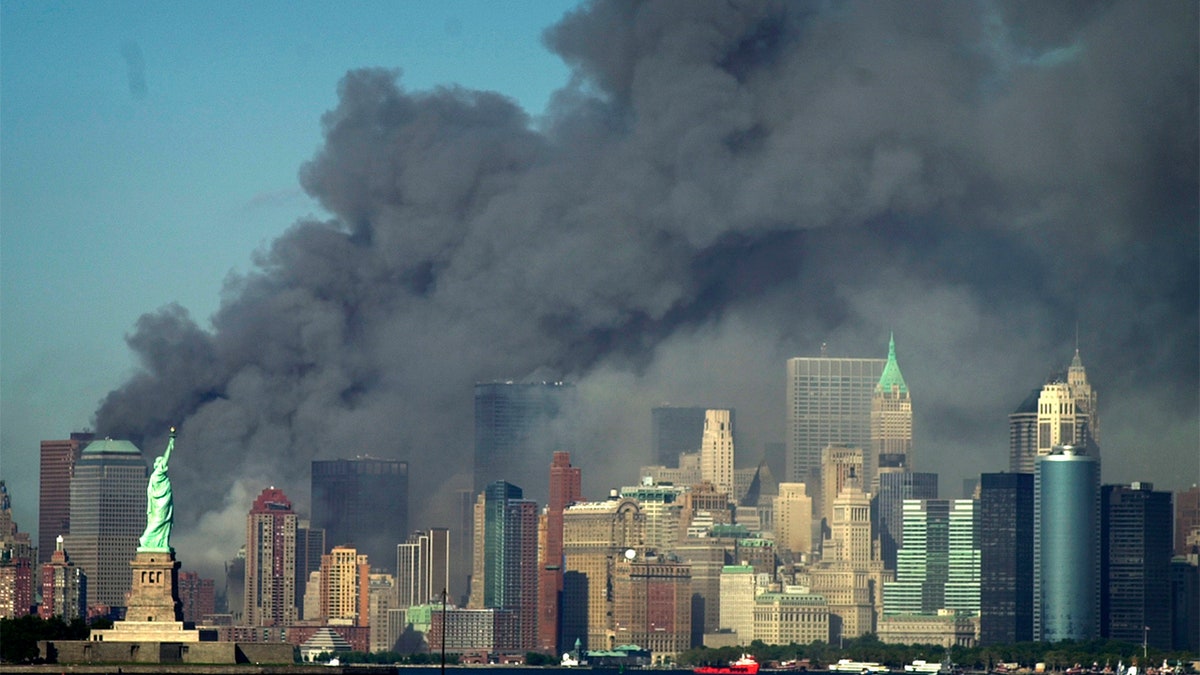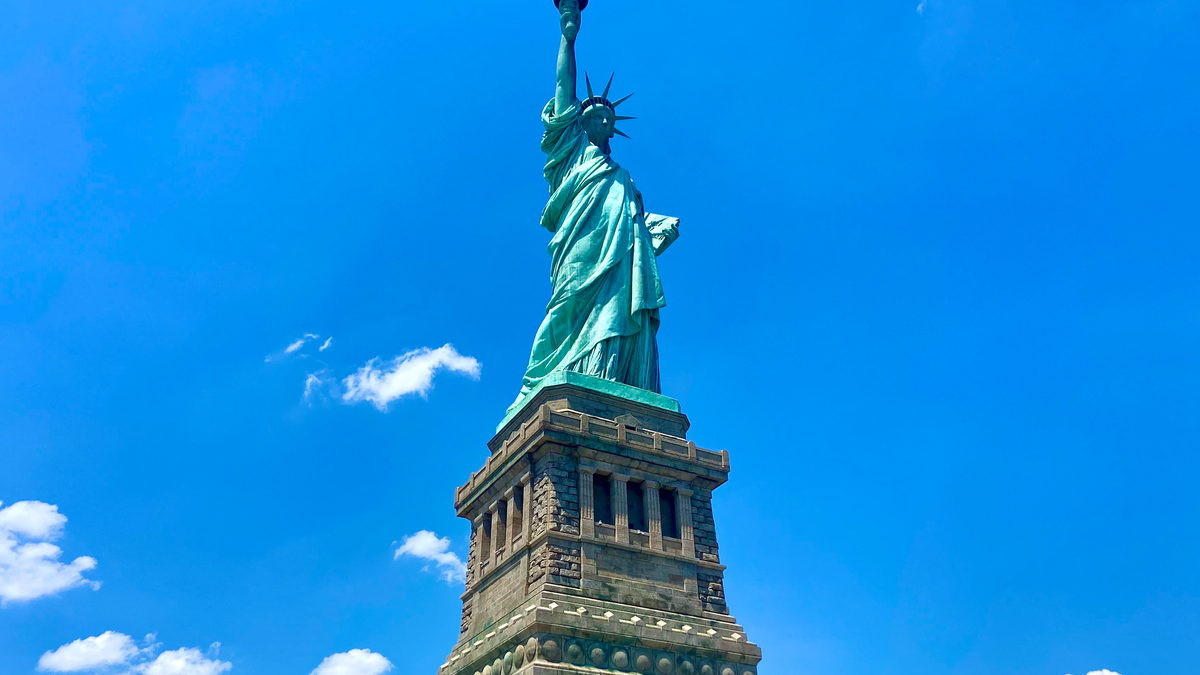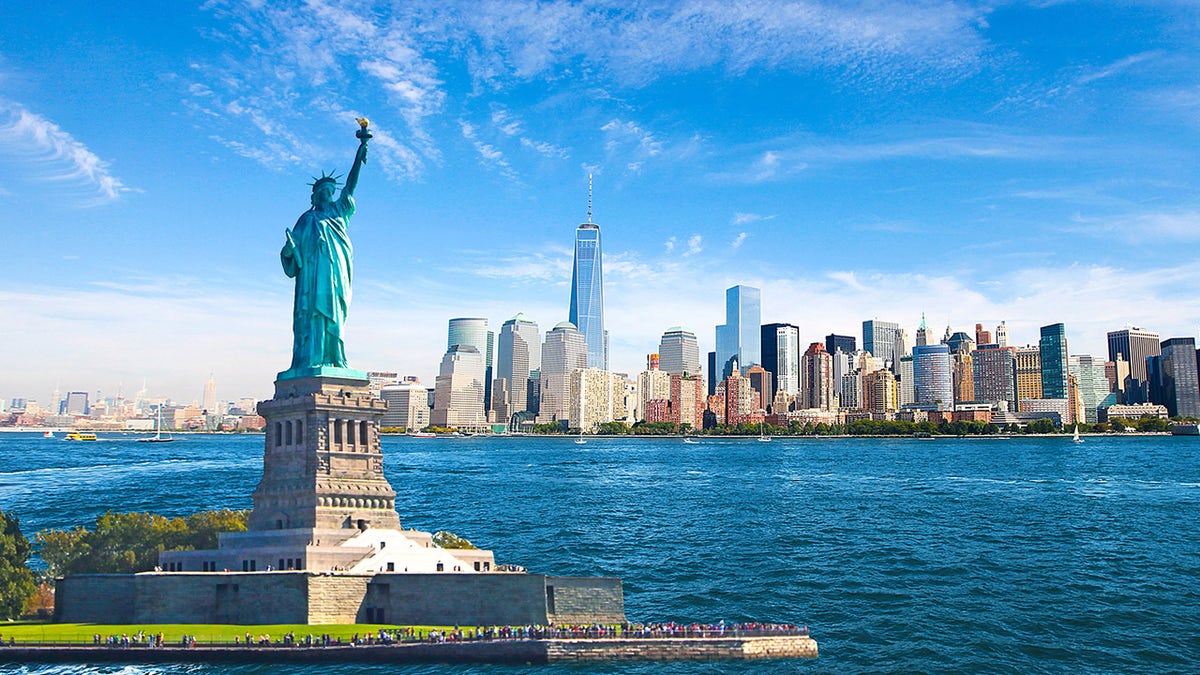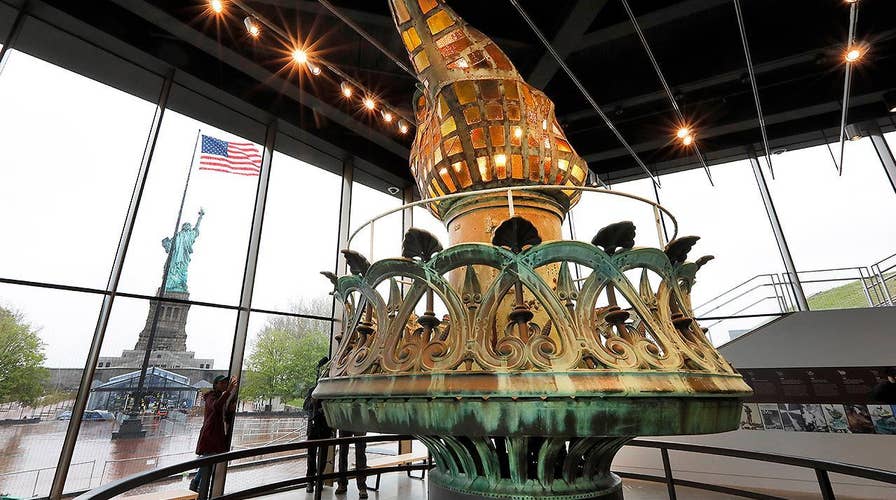New Statue of Liberty Museum opens on Liberty Island
The centerpiece of the unique new museum is the original torch carried by Lady Liberty; Laura Ingle reports from inside.
The Statue of Liberty, perhaps the most celebrated symbol of American ideals and exceptionalism, reopened after the 9/11 attacks on this day in history, August 3, 2004.
The globally recognized landmark had been closed to the public for nearly three years following the destruction of the nearby World Trade Center on Sept. 11, 2001.
Lady Liberty stood stoically watching over the horror in Lower Manhattan that day, little more than a mile across New York Harbor.
ON THIS DAY IN HISTORY, AUG. 2, 1943, JFK SAVES PT-109 CREW AFTER COLLISION WITH JAPANESE DESTROYER
"This beacon of hope and liberty is once again open to the public, sending a reassuring message to the world that freedom is alive in New York and shining brighter than ever before," said then-Gov. George Pataki, as he reopened the Statue of Liberty along with Michael Bloomberg, NYC's then-mayor, plus the Secretary of the Interior Gale Norton, other officials and members of the public.
The celebration featured pomp and circumstance, including a performance of "You're a Grand Old Flag" and the national anthem by a military choir.
ICONIC 9/11 PHOTOS AND THE PHOTOGRAPHERS WHO SHOT THEM: HERE ARE THEIR STORIES
But the event also came amid concerns about terror attacks that loomed over the nation long after 9/11. New York City, nearby Newark, N.J. and Washington, D.C., all faced terror threats in the days before the reopening ceremony.

Thick smoke billows into the sky from the area behind the Statue of Liberty, lower left, where the World Trade Center was, on Sept. 11, 2001. (AP Photo/Daniel Hulshizer)
"I think it shows the world that liberty cannot be intimidated," Craig Manson, assistant interior secretary, said before the festivities.
"I think it's significant that despite the raising of the alert levels, we are still going ahead with the reopening."
STATUE OF LIBERTY'S ‘LITTLE SISTER’ ARRIVES IN UNITED STATES FROM FRANCE IN TIME FOR FOURTH OF JULY
The Statue of Liberty, a gift from the people of France, opened to the public in 1886. French sculptor Frederic Bartholdi conceived of it; he visited the United States in 1871 after serving his nation in the Franco-Prussian War.
Lady Liberty's interior metal framework was fabricated by Gustave Eiffel, who immediately afterward began building the iconic tower in Paris that bears his name.

The Statue of Liberty has stood proudly in New York Harbor since 1886. It attracts about 3.5 million visitors per year, but has been closed for extended periods several times in its history. (Kerry J. Byrne/Fox News Digital)
The Statue of Liberty has been shuttered for various reasons through its history.
It was closed for two years from 1984 to 1986 for extensive restoration work before its centennial celebration.
STATUE OF LIBERTY RESTRICTS TOURS AMID ‘OVERCROWDING’ CONCERNS
The scaffolding around the Statue of Liberty became a pop-culture symbol of the 1980s that appeared in everything from movies to music videos.
The National Historic Landmark closed for eight months after Superstorm Sandy in Oct. 2012, before reopening on July 4, 2013.
CLICK HERE TO GET THE FOX NEWS APP
The Statue of Liberty closed again to the public for four months at the start of the COVID-19 outbreak in March 2020, before a phased period of reopening began in July.

An amazing view of the Statue of Liberty, the skyline and One World Trade Center. (iStock)
Visitors could access the statue's famous torch for the first 30 years of its existence.
For more Lifestyle articles, visit foxnews.com/lifestyle
But public access to the torch ended following the deadly "Black Tom explosion" of July 30, 1916.
The Statue of Liberty's torch was among the structures damaged by explosion fragments.
As the U.S. contemplated entry into World War I, German spies sabotaged a barge in New York Harbor filled with an estimated 2 million pounds of arms and munitions destined for Allies in Europe.
The horrific explosion could be felt as far away as Philadelphia.
Remarkably, it killed only four people, but it caused an estimated $500 million in damage in New Jersey and New York City.
CLICK HERE TO SIGN UP FOR OUR LIFESTYLE NEWSLETTER
The Statue of Liberty's torch was among the structures damaged by explosion fragments.
It has been open only to National Park Service officials in the 106 years since the Black Tom attack.





















